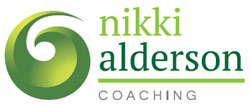A 2.5 minute read about effective time ownership
Many of us living and working through the Covid 19 pandemic are also waking up to the fact that we are no longer working from home but rather living at work instead. Now, more than ever, we are finding the insidious creep of work into our personal lives and a blurring of any discernible boundaries between the two.
It’s in our long-term interests to reinstate work-life divides and protect our wellbeing by giving ourselves a break. HR departments, too, will recognise that avoiding burnout is a vital to protect employee resilience and ensure talent retention. But finding the time to address this is not always easy.
My time management coaching sessions, delivered in-house and individually, encourage lawyers to review their time ownership strategies to promote optimum focus and more productive outcomes. Here are my top four strategies to achieve effective time ownership:
 1. Plan
1. Plan
Revered motivational speaker Jim Rohn said, “You run the day, or the day runs you” and I know from personal and observed experience that if we start our day with purpose, it’s much easier to find direction and stay on course. Even if last minute deadlines come along to blow us off track, with a plan to come back to we can more quickly capitalise on any small, unexpected pockets of time and tick off another task on the To Do List.
2. Prioritise
Whilst a To Do List is useful, it becomes most effective when we have a clear handle on the order of priority of those tasks. It was Brian Tracy who came up with the ‘Eat that Frog’ approach: thinking of the worst task to do in the day as having to eat a live frog and recommending that, rather than procrastinating, we should get up and do it first. Nothing will be worse that day, which means it is firstly done and over with, and secondly, all other tasks fall into place more easily thereafter. Another method of identifying what is important/ urgent and in what order to tackle them is Eisenhower’s ‘Do- Diarise- Delegate- Delete’ method – a sure fire way to shape the day by prioritising the most important stuff first.
 3. Be Present
3. Be Present
Even when we know what we need to do and in what order, we can still struggle with getting the job done. To ensure full focus on the task in hand, my first strategy is to make sure to stay present in it – whether it is a work task or something in our personal lives. This may mean looking at ways to ensure optimum focus in the home – by choosing a room most conducive to getting the job done, working in short bursts or longer blocks of activity, whatever works well for you. Just ensure that when you do stop, you take an adequate break, which could also involve getting out into the fresh air.
4. Unplug
Avoid digital distractions. – Simple in theory but we all know how tempting it is to sneak a peak at work emails when home schooling, for example. But all it does is cause frustration: we’re neither focusing on one thing nor the other. Whilst we are all, of course, so dependent on technology to stay connected, particularly now we are working from home so much more, allowing the 24/7 digital world to constantly monopolise our attention can seriously damage our wellbeing. So how can the digital noise be quietened?
 Turn off Notifications
Turn off Notifications
Email notifications are an unnecessary distraction which sap concentration. Set boundaries to regain a sense of control around what times emails will be checked: such as between certain times in the day. Use out of office notifications to acknowledge clients/ colleagues/ clerks etc – during the day, not just whilst away on holiday – and where needs be, don’t be afraid to activate airplane mode for deep dive concentration to ensure no distraction at all.
Social Media
Social Media plays a significant role in our daily lives, including serving a very useful purpose in business (65% of my business for example comes through Linkedin and Twitter) – but it’s important to ensure we have control over our use. You’ll find it’s empowering to create boundaries around social media, and the periods of time we access it. Focus on the time you’ll save by avoiding the death scroll or Twitter rabbit hole I’m sure we are all familiar with. Removing remove social media apps from mobile devices will avoid casual/ habitual use and facilitate more considered and purposeful access from desktops.
Set Boundaries
Identify your line in the sand – and stick to it. Only trial and error will reveal your preferred strategy for creating and communicating boundaries, but if you’re clear about when your ‘Yes’ becomes a ‘No’, you’re well on the way to reclaiming ownership of your time.
Further Reading
https://www.counselmagazine.co.uk/articles/how-to-say-no-but-keep-the-opportunities-flowing
https://www.lawsociety.org.uk/topics/blogs/stop-saying-yes-start-saying-no
Essentialism by Geoff McKeown
Nikki Alderson Biography
Nikki Alderson, specialist Corporate & Executive Coach, Keynote Speaker & Best Selling Author, & former Criminal Barrister with 19 years’ experience,
- supports organisations, law firms & barristers’ Chambers to retain female talent; &
- empowers female lawyers to achieve career ambitions.
Nikki specialises in 3 areas:
- Women Leadership Transition & Change;
- Enhanced Career break returner support; &
- Workplace resilience, confidence & wellness.
She is the author of Amazon No.1 Bestseller Raising the Bar: empowering female lawyers through coaching , (https://amzn.to/3fodKQX) nominee for the Inspirational Women Awards, Champion of the Year Category & finalist in the 2019 International Coaching Awards, International Coach of the Year Category.
Follow Nikki on
https://www.linkedin.com/in/nikkialdersoncoaching/
https://twitter.com/NikkiAlderson2
https://www.facebook.com/nikkialdersoncoaching/
Or refer to www.nikkialdersoncoaching.com

